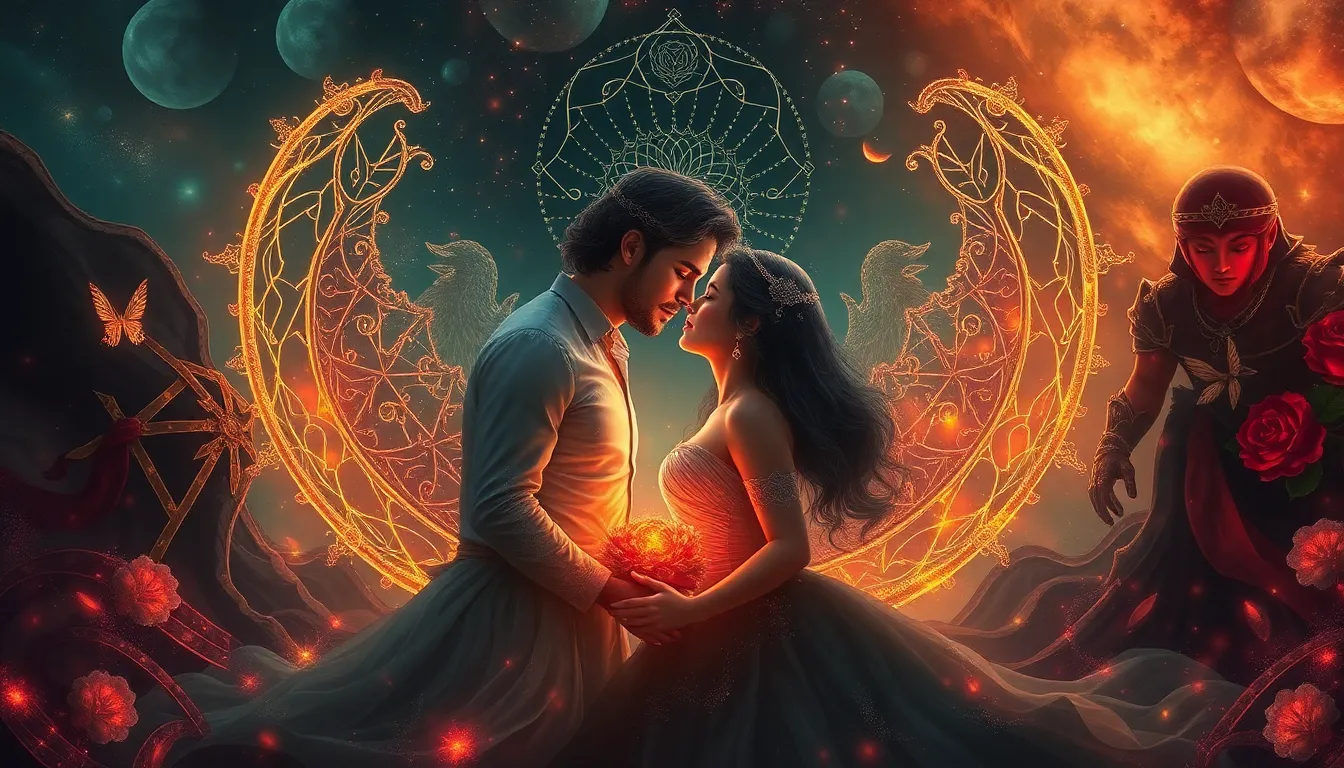Korean Mythology: The Story of the Sun and the Moon
In the rich tapestry of Korean mythology, the tale of the Sun and Moon is a captivating narrative that delves into the origins of creation, the divine marriage, and the enduring legacy of Korean culture. This ancient myth, passed down through generations, offers a glimpse into the beliefs and values that shaped Korean society.
The Origin of the Sun and Moon: A Creation Myth
The Korean myth of the Sun and Moon begins with Hwanung, the Heavenly King, who descended from the heavens to Earth, seeking to establish a new civilization. Hwanung established his kingdom on Mount Taebaeksan, the mythical birthplace of Korea. He was joined by his loyal followers, who resided in the heavens as celestial beings.
Hwanung, the Heavenly King: Descending to Earth
Hwanung, a powerful and benevolent being, yearned to create a world where humankind could thrive. He sought a worthy partner to help him shape this new society. In an act of divine intervention, Hwanung announced his desire for a companion, setting in motion the events that would eventually lead to the creation of the Sun and Moon.
The Bear and the Tiger: Seeking Transformation
One day, two animals, a bear and a tiger, approached Hwanung, pleading for him to grant them the gift of human form. Hwanung, moved by their desire for transformation, presented them with a challenge. They were to remain in a secluded cave for 100 days, consuming only garlic and mugwort, abstaining from any other food or drink. This was a test of their patience and commitment.
The Test of Patience: A Year of Solitary Endurance
The bear and tiger accepted Hwanung's challenge and retreated into the cave, determined to endure the harsh conditions. The bear persevered, remaining steadfast in her commitment. Days turned into weeks, weeks into months, and months into a year. The bear endured the hardship, her unwavering resolve a testament to her patience and dedication.
The Bear’s Transformation: The Birth of the Moon
The tiger, however, grew impatient. Unable to bear the solitude and the lack of any other food, the tiger abandoned the cave, unable to complete the arduous test. The bear, on the other hand, emerged from the cave after a full year, transformed into a beautiful woman. Hwanung, impressed by her unwavering dedication, took her as his wife. She was known as Ungnyeo, the Bear Woman.
The Tiger’s Failure: A Lesson in Impatience
The tiger's failure to complete the challenge serves as a cautionary tale in Korean mythology. It underlines the importance of patience, perseverance, and unwavering commitment in achieving one's goals. The tale reminds us that true transformation requires dedication and a willingness to endure hardships in pursuit of our aspirations.
The Divine Marriage: Hwanung and the Bear Woman
The union of Hwanung and Ungnyeo symbolizes the divine connection between heaven and earth, a fundamental concept in Korean mythology. This marriage marked the beginning of a new era, one where the celestial and the earthly became intertwined, creating a harmonious world.
The Children of Heaven: Dangun and the Founding of Korea
From their union, a son was born, named Dangun. He inherited his father's divine powers and his mother's unwavering strength. Dangun, the legendary founder of Korea, established the first Korean kingdom, Gojoseon, in 2333 BC. His story remains a cornerstone of Korean history and mythology, embodying the nation's cultural identity and its origins.
The Sun and Moon’s Eternal Journey: A Sibling Rivalry
Dangun's birth sparked a transformation in the heavens. Hwanung, in a gesture of love and honor for his wife, transformed her into the Moon, illuminating the night sky. Dangun, the son of the Moon, became the Sun, tasked with bringing light and warmth to the world. The Sun and Moon embarked on their eternal journeys, forever bound by their sibling rivalry and their common origin.
The Sun and Moon’s Role in Korean Culture: A Legacy of Mythology
The myth of the Sun and Moon, passed down through generations, serves as a powerful reminder of the importance of patience, perseverance, and the transformative power of love. It's a story that resonates with Koreans, shaping their cultural values and beliefs. Even today, the Sun and Moon are significant symbols in Korean culture, representing the balance of day and night, light and darkness, and the celestial connection to the earthly realm.
FAQ
What is the central theme of the Korean Sun and Moon Myth?
The central theme of the myth revolves around the origin of creation, the importance of patience and perseverance, and the divine marriage between heaven and earth. It also highlights the enduring legacy of Korean culture and the profound connection between the celestial and earthly realms.
Why is the myth about the Sun and Moon significant to Korean culture?
The myth of the Sun and Moon is a cornerstone of Korean mythology, representing the balance of the universe, the origins of Korean history, and the cultural values of dedication, patience, and perseverance. The Sun and Moon are important symbols in Korean art, literature, and tradition, reflecting their enduring significance.
What is the symbolic meaning of the Sun and Moon in Korean mythology?
The Sun represents light, warmth, and the masculine principle. It symbolizes strength, leadership, and the life-giving power of the heavens. The Moon, on the other hand, represents darkness, tranquility, and the feminine principle. It symbolizes intuition, nurturing, and the cyclical nature of life. Together, the Sun and Moon represent the balance and harmony of the universe.



